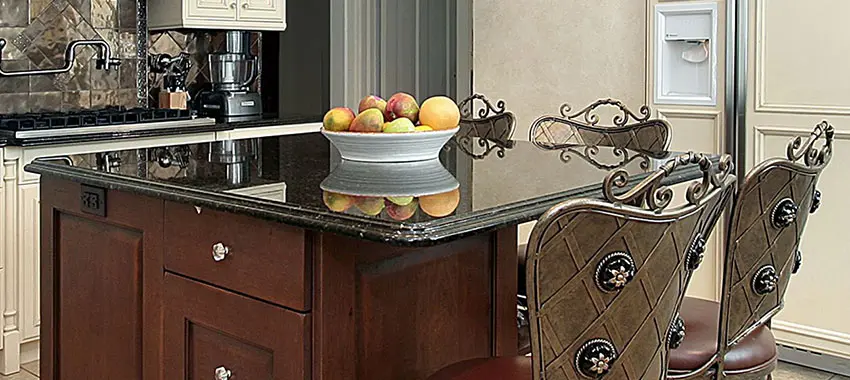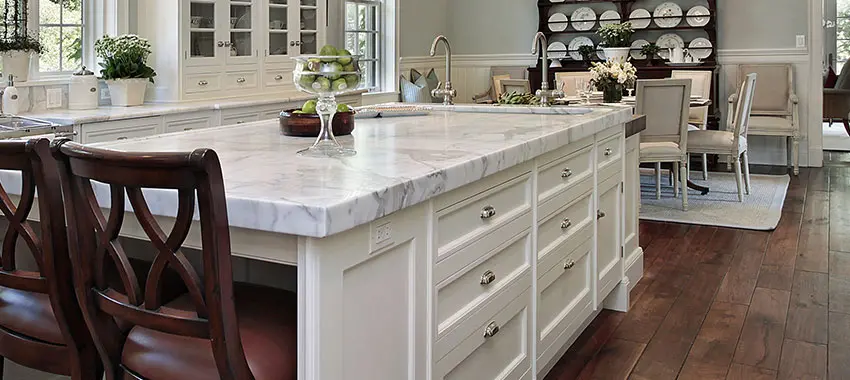Jul
Do Granite Countertops Scratch?
Granite is one of the most popular countertop materials in the world. It’s referred to as the hardest, scratch-resistant materials you can invest in. While this is the case, you must have heard some of your friends or even family members saying that their countertops developed scratches.
Do granite countertops scratch? They do. The countertops can be scratched by other items that are equally hard or harder than granite itself. These include stones such as diamonds. So you should avoid pressing your diamond ring into granite or pulling it along the surface.
Quartz and other cutting devices designed to cut through granite will also scratch the countertop material. In most cases, contrary to popular belief, knives won’t scratch granite, but using them directly on the surface will dull them. So to preserve them, you should always have a cutting board in place.
Why do the countertops scratch?
While the countertops are tough and durable, they aren’t scratch proof. When you roughly use them, or an accident happens, the countertops can crack, chip, or even develop major scratches.
Some of the reasons the countertops can develop scratches and cracks include:
- Falling of heavy objects on the countertops
- Cutting vegetables with a sharp knife directly on the countertops
- Using abrasive products on the countertops. This often happens when you are cleaning the surfaces.
- Sliding heavy utensils or pottery with hard pointed parts on the countertops.
Even a minor scratch on the countertops will spoil the beauty of the countertops. The scratches also trap dust, creating a space for bacteria and other microorganisms to grow.
Due to this, you should move with haste and fix the scratches.
Ways to fix granite scratches
There are plenty of ways you can fix the scratches, and it varies depending on the depth and size of the scratch. You can group scratches into three main categories:
- Hair like scratches
- Scratches deeper than 2mm
- Scratches deeper than 3 mm
You can fix the minor scratches on your own, but for scratches deeper than 2mm, you should seek professional help.
Fixing hair-like scratches
Hair like scratches are easy to fix, and you can easily fix them on your own using one of the following methods:
Washing the scratches with water and dish wash: Here, you need to find a course rag and wash the scratched area with warm water and dish wash. You should saturate the granite surface with a dishrag soaked with hot soapy water and let it sit for some time.
With little pressure and cleaning, some of the scratches will fade and others disappear. If there are any deeper scratches, they will remain as they are.
Use penetrating sealers: You can apply a penetrating stone sealer at least once a year to add extra protection to your granite counters. All you need is to buy a brand that is recommended by the manufacturer and follow the application directions. After applying it, give it time to dry completely. The sealer soaks into the scratches and fills the scratches, making them invisible to the eye.
Other ways you can fix the hair-like scratches include: using resin scratch stick and ultra-fine steel wool.
Fixing scratches deeper than 3mm.
As mentioned above, you should refrain from attempting to fix scratches deeper than 2 mm. If you got larger scratches, you are better off hiring granite experts.
Most of the contractors will use a diamond polishing or sanding pad to repair small or medium scratches. Since diamond is harder than granite, it will remove the annoying scratches.
Preventing scratches from coming about
Prevention is always better than cure, so you should always strive to prevent the scratches from coming about instead of repairing them. According to granite installers Rockville, the best way to prevent scratches from coming about is to seal the counters regularly.
After sealing it at installation, you also should seal it once every year. By sealing the surfaces, you provide a protective coating that is hard to remove unless you dig too hard into it.
It’s also wise to keep damaging materials such as precious stones and other materials stronger than granite away from the counters.



